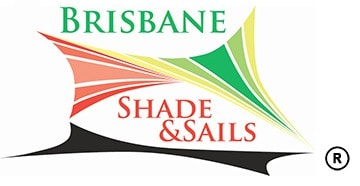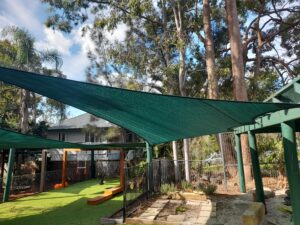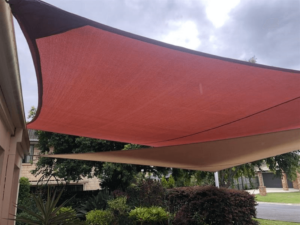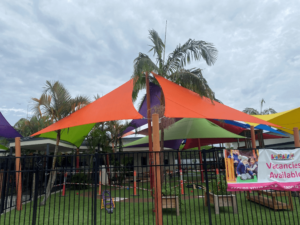A shade sail has three components. First, it has a shade fabric which protects people from heat and ultraviolet radiation by providing a cool shade. Second, it has steel posts which holds the shade fabric at a height that fits its location and purpose.
The third component is the attachment system which holds the shade sail and the posts together. While they may not be as visible as the other two components, their importance can’t be overlooked. Attachment components ensure the structure remains steadfast against gusts of wind and other adverse weather conditions.
Usually, homeowners and commercial property owners avail of complete shade sails packages, which saves them the hassle of shopping for separate components. Here at Brisbane Shade & Sails, we consider our clients’ input in planning their custom shade structures in Brisbane.
Should you need something different, consider the following tips:
Galvanised or stainless
Shade sail attachment systems are often made of steel, as this material is ideal for its strength and stability. However, the kind of steel they’re made from is a key distinction. Most manufacturers forge the systems’ components from either galvanised or stainless steel.
Galvanised steel is steel hot-dipped into a bath of molten zinc to form an anti-corrosion barrier. When exposed to things that cause corrosion, the zinc layer will corrode first before the steel inside. Meanwhile, stainless steel is steel alloyed with other minerals to provide a passive anti-corrosion layer that regenerates when exposed to oxygen.
While stainless steel offers superior corrosion resistance and a polished appearance, it’s significantly pricier than galvanised steel. This extra cost can be justified for architectural or demanding weather applications. However, for budget-conscious needs with corrosion resistance as a priority, galvanised steel is a reliable alternative.
It’s also important to consider the local environment if you’re deciding between getting parts made from either type of steel. Stainless steel is designed for use in marine conditions, so a shade sail near the coast will benefit from stainless steel attachments. If saltwater isn’t a factor where you live, galvanised steel can help cut costs.
Sturdy foundations
Shade sails can be freestanding (attached to a series of steel poles)or attached to anchors installed on sturdier foundations, like a wall or roof truss. This flexibility allows owners to erect their shade sails in various ways, as opposed to using other forms of barriers. The latter setup is also cost-effective, as it won’t need as many poles and supporting components as the former.
Tension is a factor when choosing between freestanding or anchored shade sails. We recommend keeping the distance between shade sail anchors and the shade sail’s corners at no more than one foot(0.3 metres) for maximum tension. It’s also advisable to add between two and six feet (0.6 and 1.83 metres) relative to the shade sail for the distance between anchor points on each side.
Why is this important? If the project can’t meet these requirements by anchoring them on firmer foundations, you may be better off investing in a freestanding system. The area shouldn’t be too little or too large for the shade sail hardware, as it might affect its stability.
It is not advisable to place shade sail attachments on trees. Some people may do this using tree straps, but this is only ideal when the trees are exceptionally large and can hold their own under strong winds. Otherwise, steel posts and walls are preferable.
Pulleys, turnbuckles, or commercial brackets
Attachment systems provide tension in one of three ways: pulleys, turnbuckles, or commercial brackets. The first two are common in residential shade sail projects, whereas the last one is for projects that involve a larger-than-standard shade sail. The choice of system determines not only how easily the shade sail can be set up but also how easily it can be taken down when necessary.
- Pulleys work by adjusting the shade sail guy ropes (often 2.5 metres in length). Applying tension is as easy as pulling down the rope and tying it in a cleat below, and loosening it is only a matter of untying the rope. This makes setting up and removing the shade sail easy.
- Turnbuckles tighten or loosen tension with the rotation of a pair of threaded eyebolts. They offer slightly better tension than pulleys, and they require tools for adjusting the eyebolts.
- Commercial brackets are larger versions of turnbuckles used for shade sails beyond the standard sizes. They feature a series of plates that bolt down the corners of the shade sail with a series of threaded rods. They also come with a secondary attachment system that can be used as a replacement for the primary should the need arise.
As with the choice between galvanised and stainless steel attachment systems, the choice for one of these systems boils down to cost and convenience. Shade sail turnbuckles are more affordable than pulleys, but the latter are easier to operate. Commercial brackets, as their name implies, are reserved for huge custom shade sails for commercial and public properties.
Conclusion
The three parts of a shade sail work in concert. It’s essential for all components to be of top quality, accurately sized, and properly installed to obtain optimal functionality. Know the ideal attachment system you need, and don’t hesitate to consult a professional as needed.





